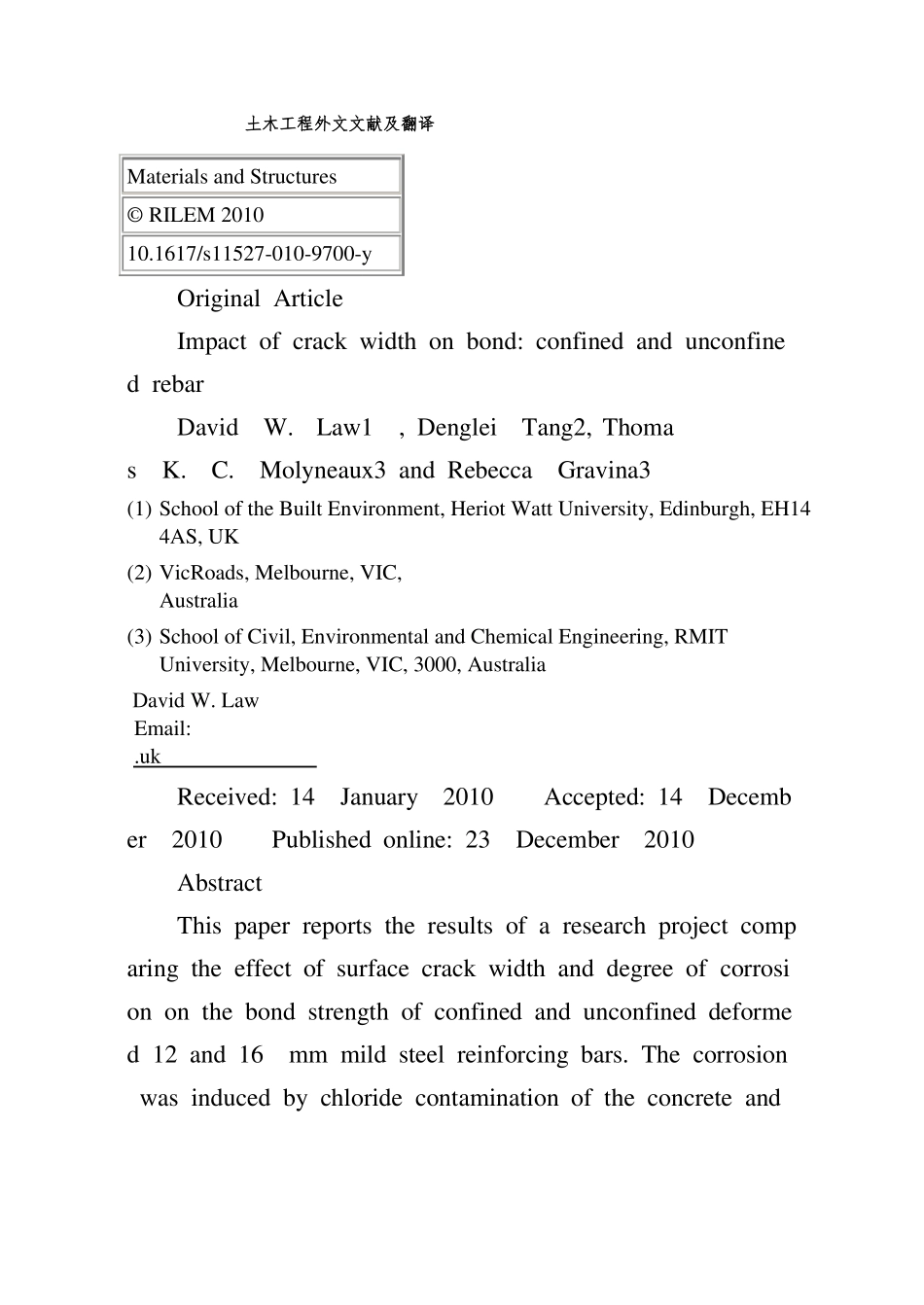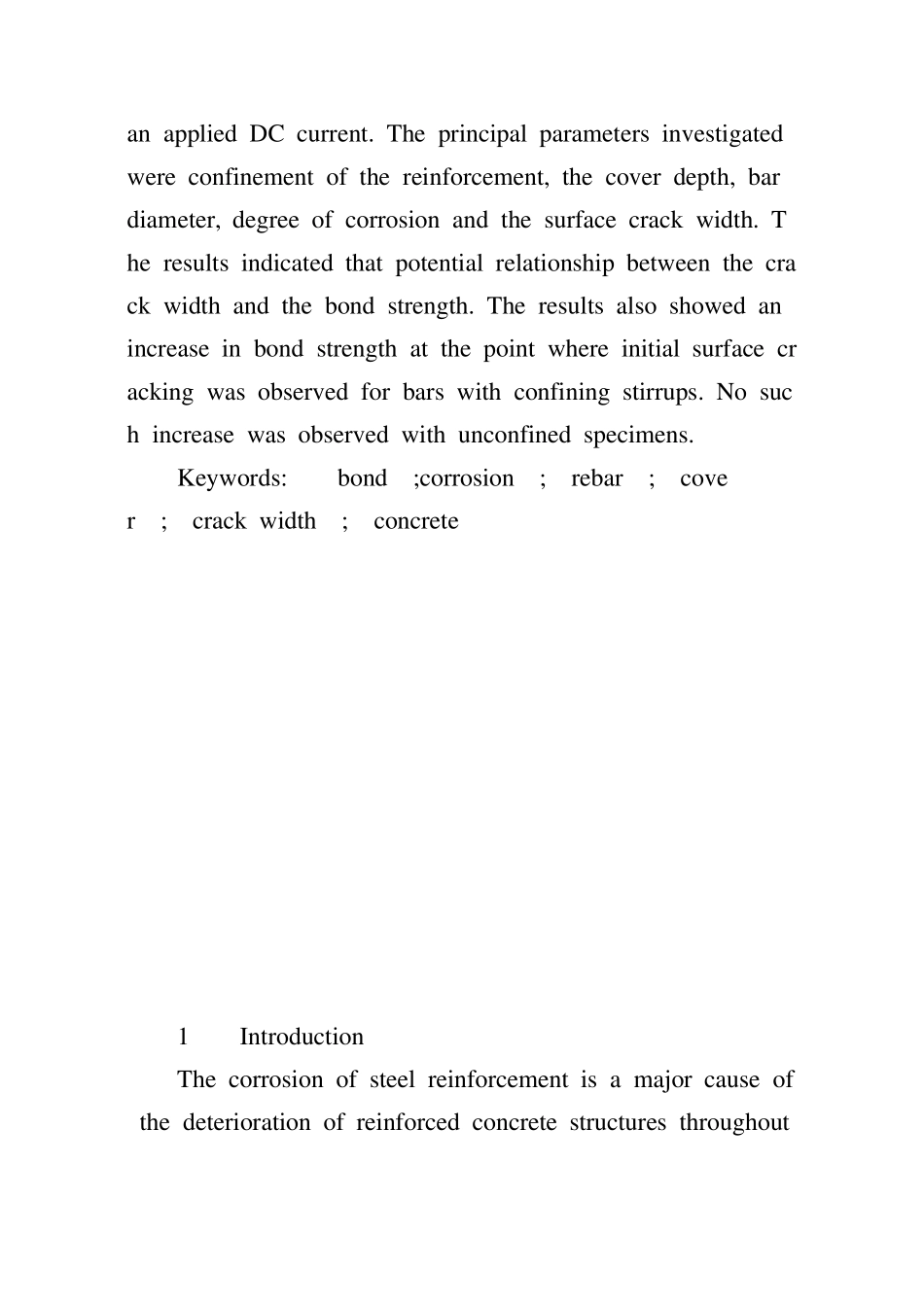土木工程外文文献及翻译Materials and Structures© RILEM 201010.1617/s11527-010-9700-yOriginal ArticleImpact of crack width on bond: confined and unconfined rebarDavidW.Law1, DengleiTang2, ThomasK.C.Molyneaux3 and RebeccaGravina3(1) School of the Built Environment, Heriot Watt University, Edinburgh, EH144AS, UK(2) VicRoads, Melbourne, VIC,Australia(3) School of Civil, Environmental and Chemical Engineering, RMITUniversity, Melbourne, VIC, 3000, Australia David W. LawEmail:.ukReceived: 14January2010Accepted: 14December2010Published online: 23December2010AbstractThis paper reports the results of a research project comparing the effect of surface crack width and degree of corrosion on the bond strength of confined and unconfined deformed 12 and 16mm mild steel reinforcing bars. The corrosionwas induced by chloride contamination of the concrete andan applied DC current. The principal parameters investigatedwere confinement of the reinforcement, the cover depth, bardiameter, degree of corrosion and the surface crack width. The results indicated that potential relationship between the crack width and the bond strength. The results also showed anincrease in bond strength at the point where initial surface cracking was observed for bars with confining stirrups. No such increase was observed with unconfined specimens.Keywords:bond;corrosion;rebar;cover;crack width;concrete1IntroductionThe corrosion of steel reinforcement is a major cause ofthe deterioration of reinforced concrete structures throughoutthe world. In uncorroded structures the bond between the steel reinforcement and the concrete ensures that reinforced concrete acts in a composite manner. However, when corrosionof the steel occurs this composite performance is adverselyaffected. This is due to the...


